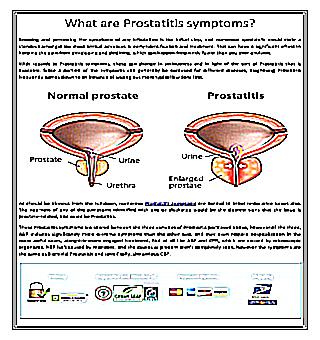Home >
Erectile Dysfunction >
Cuts in prostatitis
Cuts in prostatitis

Stagnation in the prostate and bloodstream, which feed the organs in the small pelvis, an infection that penetrates the prostate gland through the bloodstream or through the urethral canal provoke an inflammatory process in the male gland of acute or chronic course. This pathological process cannot be without pain for patients.
In case of prostatitis, the patient feels and observes:
- frequent, interrupted urination;
- erectile dysfunction;
- pain during outflow of urine;
- impaired libido.
When establishing a diagnosis, the urologist relies on the patient's complaints, the localization of pain, and its nature, since this is the main indicator for identifying the disease.
In which area the pain is localized
In acute and chronic prostatitis, the pain has the same localization. Basically, an unpleasant sensation occurs in the perineum and radiates to the rectum or scrotum.
A painful feeling can be felt:
- lumbosacral area;
- in the pubic region;
- buttocks, lower limbs.
Such localization of unpleasant symptoms, forgive me, makes it possible for a specialist to accurately diagnose. However, medical speculations should be confirmed or refuted by the clinical picture. These are analyzes of sperm, urine, secretions, blood, ultrasound.
When pain occurs
Pain with prostatitis can appear at any time, then it can disappear.
Generally a painful sensation occurs when:
- intercourse;
- ejaculation;
- erections;
- long abstinence;
- with excessively active sex life;
- while passing urine;
- during heavy physical exertion;
- in stressful situations;
- frequent drinking;
- smoking.
What to do
Prostatitis causes cramps and soreness due to clogged channels of the prostate gland with a secret with purulent discharge. Pus prevents the scrotum from expelling prostate secretions normally. The substance, which is produced by the prostate, without a free exit, begins to accumulate, which creates pressure on the walls of the organ, accompanied by pain.
Based on the painful sensations, the patient is prescribed treatment. Usually, an individual scheme is considered for each patient. Untimely treatment of the acute form can provoke the transition of pathology into a chronic course.
Drug-based approach
Treatment includes the following scheme:
- Antibacterial therapy.
- Antispasmodics.
- Anti-inflammatory drugs (non-steroidal).
- Application of the vitamin complex.
- Bioregulators (peptides).
- Relaxants (muscle).
This is an approximate scheme, however, treatment is prescribed by a specialized doctor on an individual basis.
Physiotherapy
The most commonly used procedures are marked as follows:
- magnetic therapy;
- laser treatments;
- hirudotherapy;
- acupuncture;
- massaging the prostate.
The choice of physiotherapy treatment is determined by the doctor.
Healing therapy with folk remedies
Among the large number of folk remedies, the most effective are highlighted.
Medical and pain relievers should be prescribed by a specialized specialist.



























